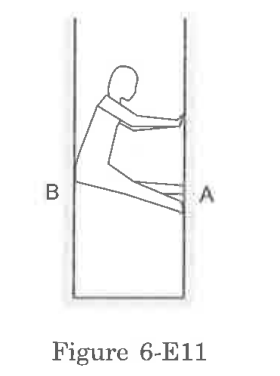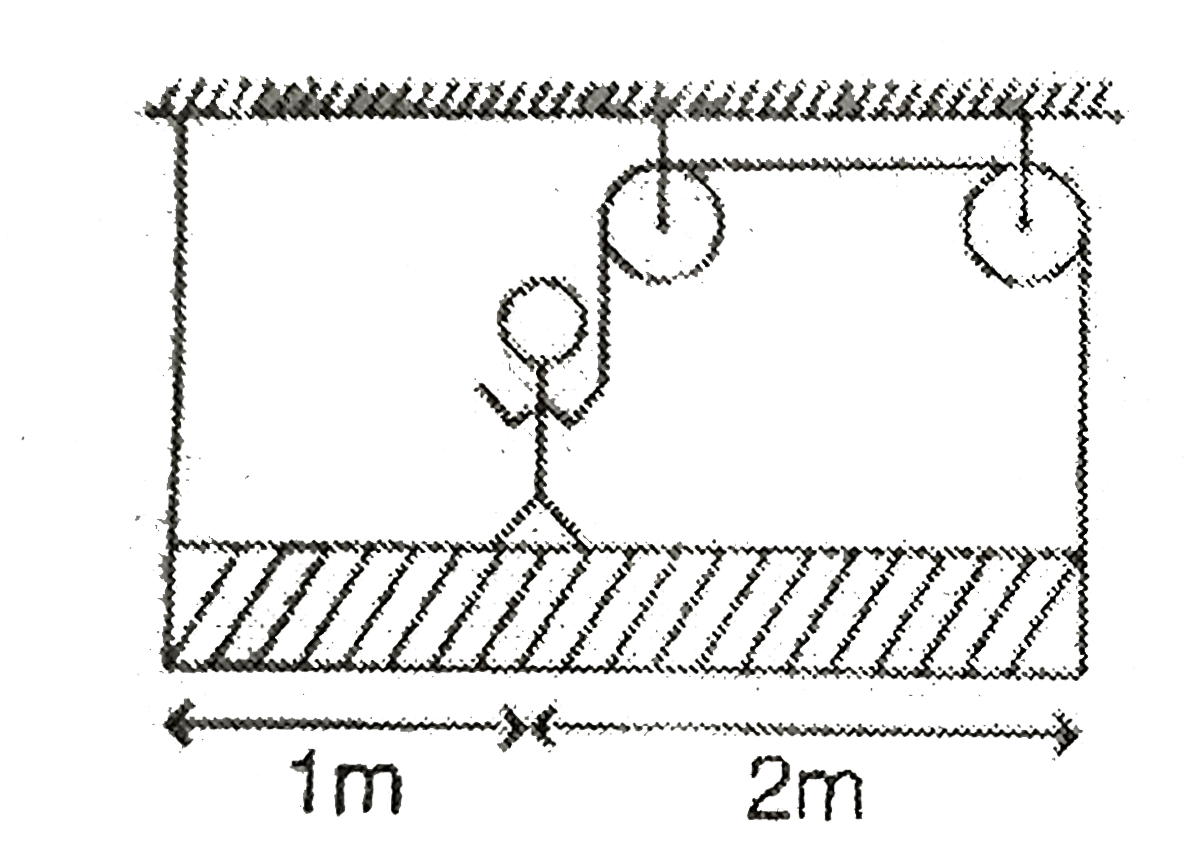
A man tries to remain in equilibrium by pushing with his hands and feet against two parallel walls. For equilibrium,
he must exert equal forces on the walls
the forces of friction at the two walls must be equal
friction must be present on both walls
the coefficents of friction must be the same between both walls and the man
The correct Answer is:A, C
Step by step video, text & image solution for A man tries to remain in equilibrium by pushing with his hands and feet against two parallel walls. For equilibrium, by Physics experts to help you in doubts & scoring excellent marks in Class 12 exams.
Updated on:21/07/2023Topper's Solved these Questions
- KINEMATICS, FORCESBOOK - D MUKHERJEECHAPTER - KINEMATICS, FORCESEXERCISE - Type 2
22 Videos
- KINEMATICS, FORCESBOOK - D MUKHERJEECHAPTER - KINEMATICS, FORCESEXERCISE - Revision Exercise
26 Videos
- IIT QUESTIONS 5BOOK - D MUKHERJEECHAPTER - IIT QUESTIONS 5EXERCISE - Matrix matching type
2 Videos
- MISCELLANEOUS QUESTION 1BOOK - D MUKHERJEECHAPTER - MISCELLANEOUS QUESTION 1EXERCISE - Miscellaneous Questions-1 (Straight-Objective Type)
54 Videos
Similar Questions
Give the two approaches for determining equilibrium.
View SolutionA person (40 kg) is managing to be at rest between two verticle walls by pressing one wall A by hi hands and feet and the other wall B by his back figure. Assume that the friction coefficient between his body and the walls is 0.8 and that limiting friction acts at all the contacts. a. show that the person pushes the two walls with equal force. b. find the normal force exerted by either wall on the person Take g=10ms2.

View Solution
Knowledge Check
A man balances himself in a horizontal position by pushing his hands and feet against two parallel walls .(see figure of Q.no ). His centre of mass lies midway between the wall s . The coefficients of friction aat the walls are equal . Which of the following is not correct ?
AHe exerts equal forces on the walls .BHe exerts only horizontal forces on the walls.CThe forces of friction at the walls are equal,DThe forces exerted by the walls on him are not horizontal.Equilibrium price remains the same when :
AIncrease in Demand = Increase in SupplyBIncrease in Demand > Decrease in SupplyCDecrease in demand > increase in SupplyDIncrease in demand = Decrease in SupplyEquilibrium price remains the same when
Aincrease in demand = increase in supplyBdecrease in demand = decrease in supplyCincrease in demand when supply is perfectly elasticDall of these
A uniform beam of length 2 a rests in equilibrium with one end resting against a smooth vertical wall and with a point of its length resting upon a smooth horizontal rod which is parallel to the wall and at a distance b from it. The inclination of the beam to the vertical is sin−1(ba)13.
View SolutionSuppose the demand and supply curves of a Commodity-X is given by the following two equations simultaneously:
Qd = 200 - p Qs =50 + 2p
(i) Find the equilibrium price and equilibrium quantity.
(ii) Suppose that the price of a factor of production producing the commodity has changed, resulting in the new supply curve given by the equation
Qs' = 80 + 2p
Analyse the new equilibrium price and new equilibrium quantity as against the original equilibrium price and equilibrium quantity.
View SolutionSuppose the demand and supply curves of a Commodity X is given by the following two equations simultaneously:
Qd = 200 - p , Qs = 50 + 2p
(i) Find the equilibrium price and equilibrium quantity.
(ii) Suppose that the price of a factor of production producing the commodity has changed, resulting in the new supply curve given by the equation:
Qs'=80+2p
Analyse the new equilibrium price and new equilibrium quantity as against the original equilibrium price and equilibrium quantity.
View SolutionAt equilibrium two cells should have
View SolutionA system consisting of a man on platfrom is in equilibrium. Masses of man and platiform are equal. The platform is in equilibrium due to two massless string is pulled by man resting on platform. Find the ratio of tension in left string to the tension in right string.

View Solution
